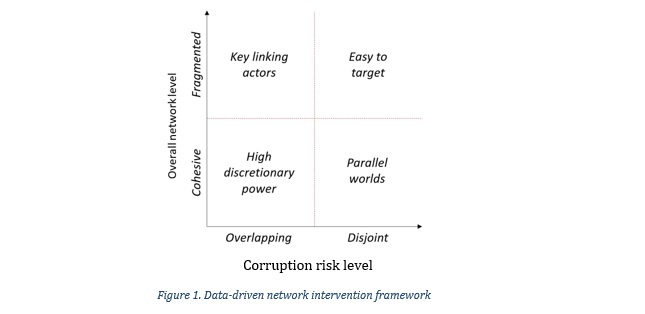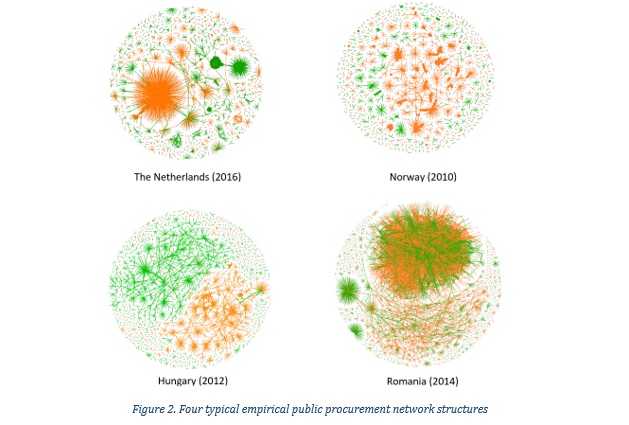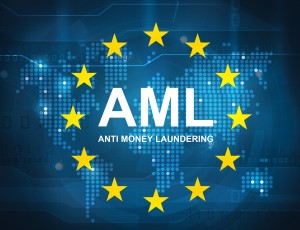By Silvia Fierăscu| Timișoara
In countries where corruption is an endemic problem, the investigative and intervention strategies being employed to curb the phenomenon at present are not working. Despite the consistent efforts and resources invested into such initiatives, they fail to lower the levels of corruption.
Why is this? It is because, in countries with systemic corruption, we are dealing with institutionalised complex networks of corruption. The current methods used to disrupt them do not address these networks’ organising principles with the right data, conceptual framework or analytical tools.
The successful convictions in countries such as Romania are of limited impact because they are relatively random shocks on resilient ecosystems of corruption. Thus, instead of creating long-term disruptions in these corruption machines, investigations rely extensively on randomly obtained, subjective data and politicised investigation instruments. If we want anticorruption investigations and interventions to be more efficient and effective, we need to start mapping these networks using objective data, analyse them with the appropriate methods, and focus on designing the most impactful disruption interventions.
By using network and data science, objective data and technology, institutions and organisations with a stake in anticorruption can meaningfully contribute to systematic, sustainable, data-driven, and evidence-based anticorruption policies.
Despite the amount of financial support, number and diversity of initiatives, programmes and projects, press coverage, public protests, and tech solutions invested into the global anticorruption fight, research and practice show that they have had little impact in reducing general levels of corruption[1].
It is not that anticorruption efforts, individually, have failed. It is rather that, collectively, they do not amount to sustainable models of anticorruption policies. An important reason for this is that they rely heavily on subjective measures of corruption, such as accounts from whistleblowers, perceptions of corruption, and a principal-agent framework for understanding the phenomenon; they largely ignore the environment of interactions between legal and illicit behaviour which often go hand in hand with the broader phenomenon of state capture.
Successful convictions in countries such as Romania are of limited impact because they are relatively random shocks on resilient ecosystems of corruption.
First, the scientific literature that informs the practice is disparate and inconsistent, and the studies make extensive use of data on perceptions of corruption to understand the phenomenon. Perceptions of corruption, the most commonly used type of quantitative data in corruption research, reveal important contextual information.
However, they are sensitive to general public opinion, interactions with limited and biased media content, and peer pressure, and they represent pre-formed beliefs concerning the phenomena they observe, which makes these studies and insights hard to compare across countries and contexts.
Second, criminal investigations of high-level corruption rely overwhelmingly on whistleblower accounts. These are notorious for being an easily politicised instrument. Additionally, whistleblowers lack proper protection across countries, and are thus deterred from coming forward.
They are often active participants in the corruption machines, making them less likely to come forward at the key times, but rather at personally convenient and safer times. Most importantly, they can only validate their local-level surroundings and account for small-scale and incomplete pictures of the network structures and mechanisms at work in the corruption machines, making their contributions relevant but rarely decisive in dismantling these ecosystems.
Third, the civictech space on anticorruption is still preoccupied with information and data management, and is not yet engaged at the level of systematic investment in data analytics. And when they do perform data analytics, the focus is on local solutions, exploratory procedures, data visualisation or platform design, and less on interpretation of results, specific problem-solving or scale-up strategy. Moreover, the civictech space is only in the early stages of working more consistently and extensively with empirical data on corruption.
Fourth, legislation is still missing or ineffective, or lacks proper implementation across countries, rendering it unable to ensure an integrated system of correction for high-level corruption, such as confiscations or loopholes around time in prison; it remains unable to offer proper protection to whistleblowers, or to financially and consistently support anticorruption efforts in different areas of social life.
Taken together, these challenges prevent the accumulation of knowledge, make it hard to do cross-country comparisons and even in-country comparisons at different time periods, and perpetuate disciplinary and geographical boundaries instead of enabling interdisciplinary, cross-sectoral and global collaboration.
There is an emerging literature which is trying to bridge vocabularies, use objective data, analyse it with appropriate methods and work cross-sectorally, and use technology to apply and implement their knowledge; but this movement is rather new, and still very small when compared to mainstream academic and policy work.
To be sure, I am not arguing that such subjective accounts are not useful or needed. On the contrary; they are necessary to confirm and validate cases, and to obtain deep knowledge of how the corruption machines function.
Mass perceptions of corruption are also necessary to gain a sense of the diversity of the situations at play, from the perspective of those involved in or observing such situations. A principal/agent framework for conceptualising corruption is useful to understand specific and small-scale situations of dependency and influence.
I am arguing, however, that subjective data cannot form the starting point of anticorruption investigations, interventions and policies. To be efficient, effective, and sustainable, these activities need to be informed, first and foremost, by quantitative analyses of big, objective data, of the kind which provides an initial ‘big picture’, a broad overview and key, actionable insights into those areas of investigation and intervention that can be prioritised. They can then be further validated and detailed with subjective accounts.
There are cases of countries that have made considerable progress in fighting corruption, such as Romania, Georgia, Singapore and South Africa. However, the sustainability of their models in the long run is still debatable.
One example can be seen in the drop in institutional performance after the political removal in 2018 of the Chief Prosecutor of the Romanian Anticorruption Directorate, the political pressure on the institution while she was still in office, and the lack of government support and personal attacks throughout the process of her recent nomination as European Prosecutor in 2019.
Whether the anticorruption approaches involve a top-down strategy to tackle grand corruption, as in the case of Romania, or a bottom-up strategy to tackle bureaucratic and petty corruption, as in the case of Georgia, these models are still vulnerable, in part because of the approaches they take in research and practice when it comes to criminal investigations and disruption interventions.
An alternative approach
In countries with institutionalised corruption, levels of corruption also fail to fall because we are effectively dealing with something else, a deeper and much more widespread problem – state capture. In broad terms, state capture is when a narrow group of actors systematically hijack the purpose of a state function to serve their own narrow interests.
One example of a state function that is very vulnerable to state capture is public procurement. Annually, states spend between 5% and 20% of their GDP on procuring products and services from private firms to deliver public goods – planning, building, maintaining roads, schools, hospitals, infrastructures, etc.
When this area of the state is no longer able to deliver quality products and services for its citizens, but rather favours the enrichment and empowerment of a narrow, non-random group of individuals and organisations, then we say that the public procurement function of the state has been captured.
State capture is an umbrella concept, covering many techniques and mechanisms through which a state function can be diverted from serving the people: from legal corruption to embezzlement, and from administrative incompetence to organised crime.
The practices that lead to state capture vary along a broad spectrum, from using a legal or institutional framework to using informal relations, bribery, pressure or extortion, for example to change the rules of the public procurement process in order to ensure that certain firms receive state contracts; to use business companies to derail public funds; to pressure politicians to pass legislation favourable to business; to use political influence to reward businesses for loyalty and support; to use business resources to constrain political actors into legislating on their behalf; to change the justice laws to favour a few convicted individuals; or change the legislative process to favour the stay in power of a few politicians or political organisations.
What makes state capture important is the fact that the interaction between political and business elites and the organisations and institutions they represent is a continuous process that has extensive and multifarious consequences. Institutional affiliations create histories of organisational ties.
These relational precedents create expectations at the institutional level about future collaboration, and structure the choice of ties at both the individual and the institutional levels. They signal personal and industry- and society-level awareness about group boundaries, group membership, and key positions within and between groups.
The entanglement of unethical political-business ties leads to a certain logic of action at the highest levels of representation which discriminates heavily between groups of stakeholders.
They are inherently damaging for the democratic polity because they entail unequal and selective distributions of incentives and benefits to narrow groups, at the expense of the public interest. When they start to occur systematically, they entrench the inequalities into the wider system.
The main problem with institutionalised corruption is that the networks it creates outlive their individual participants. Individuals eliminated from these networks will likely be replaced by other players.
They become generalised, predictable, expected, informally-known rules of engagement that set up informal expectations (‘This is how things are done around here’), define roles (‘Mr. 10%’) and constrain behaviour (‘I am not signing anything before my boss arrives’). These practices become part of a vicious circle of interchangeable formal and informal interactions, personal and public approaches, positive and negative outcomes.
The main problem with institutionalised corruption is that the networks it creates outlive their individual participants. Individuals eliminated from these networks will likely be replaced by other players, and if damage is done to the operation of the corruption machine, its impact cannot be assessed unless we know the original structure of the network and the subsequent structure of the network after the intervention.
By defining state capture as a networked phenomenon, and by focusing on an area that has increasingly reliable and comparative data to work with, we are now able to systematically map these networks, assess the corruption risks at different levels of interaction, test optimal disruption scenarios, and design better interventions for which we can also meaningfully measure impact.
Empirical evidence
In my research, I used information on high and low corruption risks associated with more than 2 million public procurement contracts, across 28 European countries, over a period of 10 years (2009-2018)[2], in order to build public procurement networks.
In these networks, I link buyers (public institutions) to suppliers (businesses that won public procurement contracts) if they signed a public procurement contract. Each network tie (contract signed) has an integrity score from 0 (low integrity) to 100 (high integrity) attributed to it, based on the index developed and refined by Mihály Fazekas and collaborators[3].
The index is one of the most important advancements in the measurement of institutionalised grand corruption. It is a composite measure of elementary (micro-level) red flags that allows for the comparison of corruption risks of public procurement contracts across countries, such as whether a contract had a single bidder, whether the call for tenders was published online, when the period for applications was started, the age of the company that won the contract, and other indicators related to the overall integrity, administrative capacity and transparency of the public procurement process through which each contract went.[4]
The aim of the analyses was to generate visual maps of the distribution of corruption risks in the public procurement networks, with the purpose of devising a data-driven intervention framework for disrupting the corruption networks.
There are two dimensions of interest in devising the disruption strategies of complex networks that are informed by network theory: first, whether the network structure is fragmented or cohesive. A more fragmented network, where there are different small, disconnected groups of organisations, is easier to target than a cohesive network, where the organisations are highly interconnected.
Removing the central players that control situations of corruption from small, fragmented components effectively ensures that the network structures will collapse. On the other hand, simply removing players at random from a cohesive network will not generate disruptive shocks to the system.
Second, whether the structures with high and low corruption risks are disjoint or overlapping. Network components that have developed in parallel, and where the two types of corruption risks are disjointed, allow for the better targeting of the high corruption risks without disrupting clean behaviour. On the other hand, if clean contracting and high corruption-risk contracting frequently overlap, they signal high discretionary power on the party of the organisations, and intervening to limit high corruption-risk behaviour might also disrupt areas of clean behaviour.
 Figure 2 shows four typical public procurement network structures that were identified across the 28 countries. In these networks, public institutions are connected to businesses through public procurement contracts, to which integrity scores were attributed. The emphasis in the graphs is placed on the colours of the ties (i.e., the integrity levels of the public procurement contracts): orange means a high corruption risk, while green means a low corruption risk associated with that particular contract.
Figure 2 shows four typical public procurement network structures that were identified across the 28 countries. In these networks, public institutions are connected to businesses through public procurement contracts, to which integrity scores were attributed. The emphasis in the graphs is placed on the colours of the ties (i.e., the integrity levels of the public procurement contracts): orange means a high corruption risk, while green means a low corruption risk associated with that particular contract.
 The public procurement network in the Netherlands in 2016 illustrates a fragmented and disjointed network structure that is easy to target. An investigation can prioritise looking into the main, disconnected orange component, targeting the central organisation in that component.
The public procurement network in the Netherlands in 2016 illustrates a fragmented and disjointed network structure that is easy to target. An investigation can prioritise looking into the main, disconnected orange component, targeting the central organisation in that component.
Because the structure is hub-and-spoke, removing the central actor de facto dismantles that component, separating the high corruption-risk hive into disconnected players. Or, if the investigation institution wants to go for quick wins, it can prioritise interventions into smaller high corruption-risk components, which require fewer resources to pursue. Ideally, procurement markets featuring high corruption-risk behaviour would be fragmented and disjointed.
The public procurement network in Norway in 2010 illustrates a fragmented and overlapping network structure that requires the identification of the linking actors which hold the larger high corruption-risk component together. The aim is to disconnect it into smaller components, first by targeting the organisations that bridge the otherwise disconnected parts of the network, and then going for the central actors in each smaller component.
The public procurement network in Hungary in 2012 illustrates a network structure where the low corruption-risk organisations and the high corruption-risk ones do not interact at all. They have developed their own ecosystems and work in parallel to each other.
This graph reinforces the idea that, at least in smaller markets, the players know each other well. In Hungary, low corruption-risk public institutions and businesses know each other and completely avoid doing business with the organisations they know are involved in corruption. In this case, the high corruption-risk component needs to be treated independently, looking for bridging actors, influential and central organisations, and targeting them sequentially without any fear of disrupting the healthy part of the public procurement system.
Finally, the fourth type of network structure is illustrated by the case of the Romanian public procurement system in 2014. This network structure features the largest connected component where clean behaviour and high corruption-risk behaviour are hard to disentangle.
This shows that public institutions as well as businesses maintain a large discretionary power in how they contract: assessing the situations on a case-by-base basis, sometimes they sign clean contracts, other times high corruption-risk contracts.
This type of network is the hardest to dismantle, especially if the way it is being investigated does not involve looking at this map of connections and relying on subjective accounts, with limited information about behaviours that are inconsistent.
Cohesive and overlapping networks are very robust to random attacks. These random attacks can require the spending of institutional resources and time orders of magnitude larger than if the interventions on these structures are carried out after a thorough analysis of who the key players are, what the most important groups are, and serious tests of the optimal ways to intervene in the network without disrupting the healthy behaviours altogether.
Looking at the case of high-level corruption in Romania from this perspective, one immediately understands the reasons why, despite the success of the National Anticorruption Directorate in convicting an impressive number of high-level politicians and business people, the overall level of corruption in the country has not significantly decreased; or to understand their institutional incapacity to effectively handle overflowing mandatory investigations into the cases raised by whistleblower accounts, instead of prioritising institutional resources in an objective, analytical way; or the consequences of these cases in the public sphere, like popular disenchantment with the anticorruption fight upon the realisation that the corruption machines continue to exist, dynamically replacing the players knocked down, and which are unaffected even by the historic event of jailing one of the most powerful corrupt politicians in the history of the country’s post-Communist development.
Call to action
This essay was guided by two main questions: (1) why do anticorruption policies fail, and (2) how can we improve them?
The short answers illustrated here pursue two aims: first, to reframe the anticorruption fight from disenchantment into a more productive discussion, where different stakeholders feel empowered to contribute in various ways, rather than feeling disillusioned and powerless.
Second, to encourage institutions and organisations with a stake in anticorruption in all sectors to undertake more systematically scientific research and use civic technology to aid their daily operations, success and impact in this game.
The essay thus addresses two main audiences: the general public, who are somewhat informed about anticorruption efforts, but who have minimal instruments at their disposal to contribute to these efforts, such as time, interest and transferable skills, but who can become agents of bottom-up pressure and productivity in anticorruption initiatives; and the specialised public, experts working in public, business or civil society institutions and organisations, with more specific instruments at their disposal to contribute top-down to these efforts, such as using their capacity to institute interdisciplinary data science teams that can work on these problems more systematically.
The analytical framework for detecting the institutionalisation of corruption risks in public procurement is an essential advancement in the comparative study of state capture.

© Photo by Carlos Amarillo on Shutterstock
There are several contributions that this network perspective brings to understanding state capture and anticorruption efforts.
First, this approach uses a more intuitive and realistic understanding of how high-level corruption works. Second, it uses public and objective data, such as financial flows, to map the phenomenon and reveal the mechanisms which are at work in different contexts.
Third, it is an approach that can be empowered by technology, because it allows for the design and implementation of a sustainable platform to collect, analyse and visualise objective data to make informed decisions, using cutting-edge, valid, reliable, replicable methods and indicators.
Fourth, because it enables systematic, data-driven and evidence-based disruption scenarios that not only optimise institutional resource spending, but also disseminate information about more sophisticated strategies that have foreseeable and quantifiable consequences instead of surprising unintended consequences, like disrupting the entire administrative capacity of public institutions, or introducing more uncertainty and deterrents to businesses from competing for state contracts.
This is, nevertheless, the start of an entirely new research agenda[5], which will be subject to further research into different directions. With increasing civil unrest across countries concerning matters of grand corruption and state capture, research on these topics is more relevant than ever.
With more objective, standardised data being increasingly made available across countries, researchers have a unique opportunity to advance the knowledge of these phenomena. Using objective data and a robust analytical framework, practitioners and prosecutors have a better chance at designing effective and efficient public policy, interventions, and criminal investigations. My hope is that the added value it brings is appealing, and will make the endeavour productive and engaging.
Dr. SILVIA FIERĂSCU is Lecturer at the Philosophy and Communication Sciences Department and Researcher in the Big Data Science Laboratory at the West University of Timișoara. She holds a PhD in Political Science and Network Science from the Central European University. Her main research project focuses on analysing corruption networks across countries for understanding the optimal ways to curb forms of state capture.
References:
[1] https://www.un.org/en/events/anticorruptionday/; https://www.greensefa.eu/files/doc/docs/e46449daadbfebc325a0b408bbf5ab1d.pdf; Mungiu-Pippidi, A. (2017), ‘The time has come for evidence-based anticorruption’. Nature Human Behavior, (1): 0011 (https://www.nature.com/articles/s41562-016-0011); https://www.oecd.org/dac/conflict-fragility-resilience/publications/FINAL%20Addressing%20corruption%20together.pdf.
[2] Data obtained from opentender.eu.
[3] Fazekas, M., & Kocsis, G. (2017). ‘Uncovering high-level corruption: Cross-national objective corruption risk indicators using public procurement data’, British Journal of Political Science, pp. 1-10.
[4] A complete list of indicators used to calculate risks of corruption is available here:
[5] Fierăscu, S. I. (2019). Redefining State Capture: The Institutionalization of Corruption Networks in Hungary. Bucharest: Eikon.



